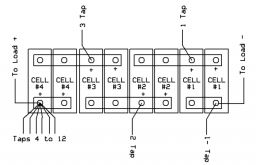A.Texas.Yankee
New Member
- Joined
- Jan 9, 2021
- Messages
- 9
Hello all,
I am new to the world of DIY Lithium and I just ordered :
12 pcs - 3.2v @ 300AH LiFePO4 cells
I plan to run a 4s3p configuration for my 5th Wheel Toy Hauler. I'll be running (2) 3kw Victron Multi-plus off this battery bank with estimated peak amps @ 500A.
I had originally planned to run 3 Daly 4s 500A BMS but when I went to order the BMS I was told by a Daly rep on Alibaba that they do NOT support parallel BMS at all. They suggested using (1) 500A BMS but in my limited knowledge of the subject, that doesn't seem correct? 5 leads to monitor 12 cells?
I looked on the forum and saw many paralleling BMS without issues, but none with my amp usage.
What is required to build my battery bank (4s3p 12v 900aH w/ 500A peak usage)?
I am new to the world of DIY Lithium and I just ordered :
12 pcs - 3.2v @ 300AH LiFePO4 cells
I plan to run a 4s3p configuration for my 5th Wheel Toy Hauler. I'll be running (2) 3kw Victron Multi-plus off this battery bank with estimated peak amps @ 500A.
I had originally planned to run 3 Daly 4s 500A BMS but when I went to order the BMS I was told by a Daly rep on Alibaba that they do NOT support parallel BMS at all. They suggested using (1) 500A BMS but in my limited knowledge of the subject, that doesn't seem correct? 5 leads to monitor 12 cells?
I looked on the forum and saw many paralleling BMS without issues, but none with my amp usage.
What is required to build my battery bank (4s3p 12v 900aH w/ 500A peak usage)?




